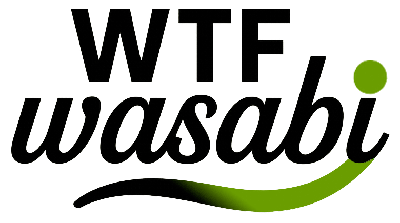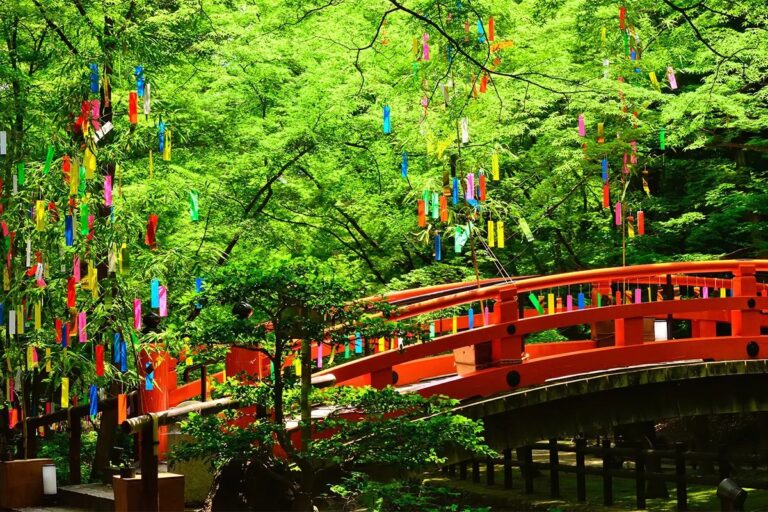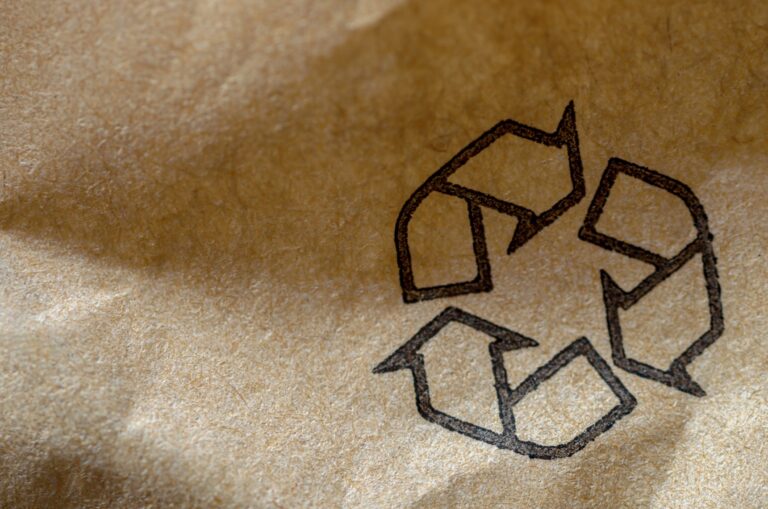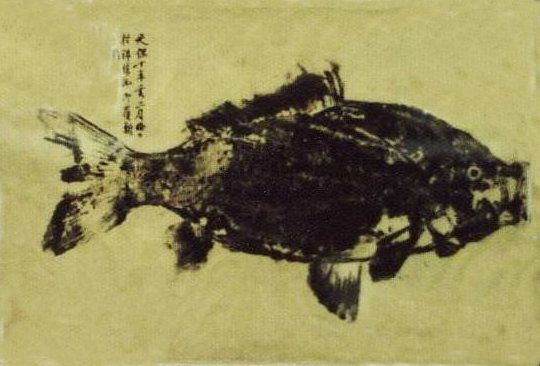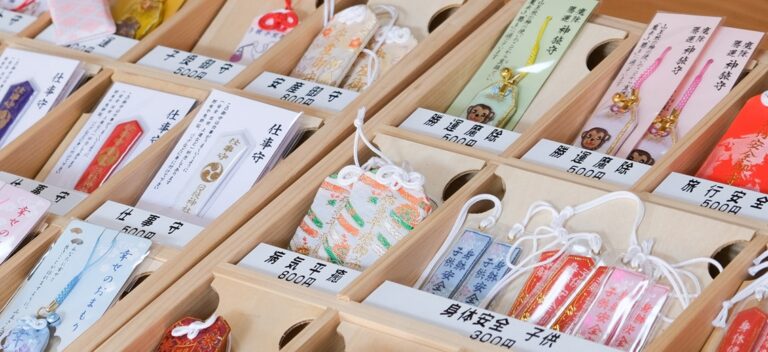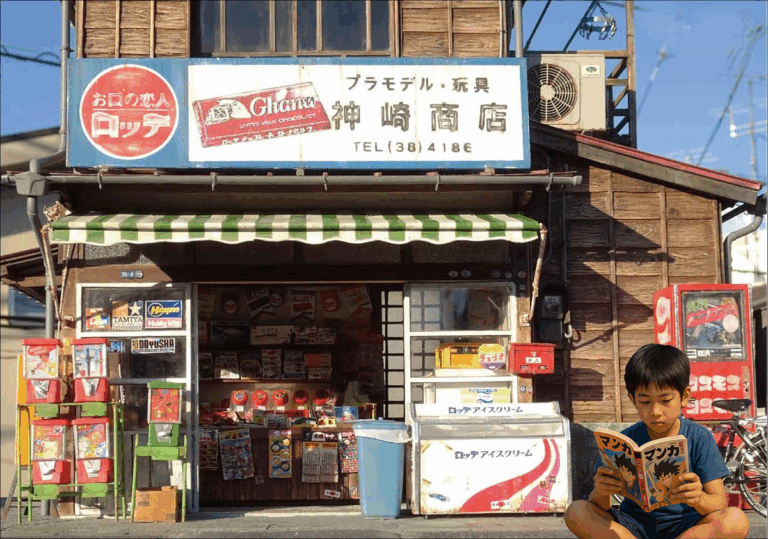Japanese Love for Reuse:Edo Recycling
“Saiga Shokunin Burui” (Collection of Yutoku Inari Shrine)
Source: National Book Database
From the Edo Period to the Present
“Mottainai” — when Wangari Maathai, Nobel Peace Prize laureate, visited Japan in 2005, she was impressed by this word and spread it globally as “MOTTAINAI.” In fact, the spirit itself had been embedded in everyday Japanese life since the Edo period. With limited resources, ordinary people built their lives on reuse and recycling.

Secondhand Clothing and the Roots of Akihabara
Most of the clothing worn by commoners in Edo was not new but secondhand. Among secondhand dealers, the Takeuma Furugiya sold garments in parts — collars and linings — to housewives in tenement houses. The fabric was used to repair clothing for their husbands and children. Clothes were worn until completely tattered, then bought back by the dealer, repaired, and resold. Nothing was wasted.
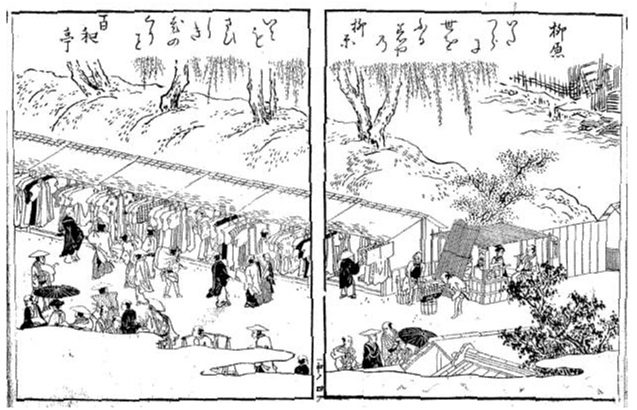
Along the Kanda River, rows of secondhand clothing stalls appeared. The area that is now Akihabara, known as an otaku mecca, was once a holy ground of secondhand clothing.
Pot Menders Called Ikakeya
Cooking pots and kettles, once broken, were never discarded. Traveling ikakeya mended them on the spot, lighting a fire and using a bellows to pour melted metal into the cracks. Metals were so valuable that they were often stolen, giving rise to the proverb “having your kettle stolen on a moonlit night.” Repairing and reusing was simply the norm.
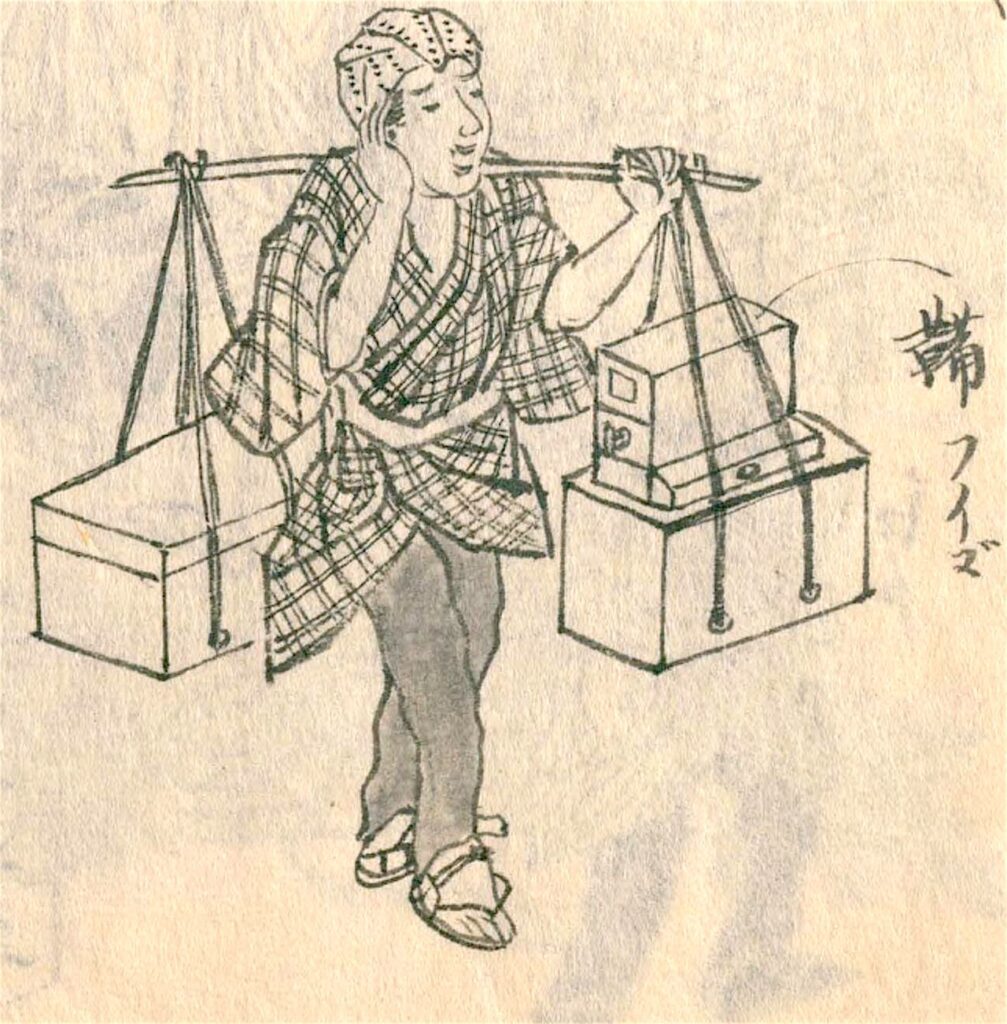
Old Umbrella Buyers and Samurai Side Jobs
Even umbrellas were not thrown away when only the frame remained. Old umbrella buyers collected them, wholesalers handed them to unemployed samurai as side jobs, and the umbrellas were re-covered and sold again. Compared with modern streets littered with disposable vinyl umbrellas after a storm, the “never waste” culture of Edo stands out.
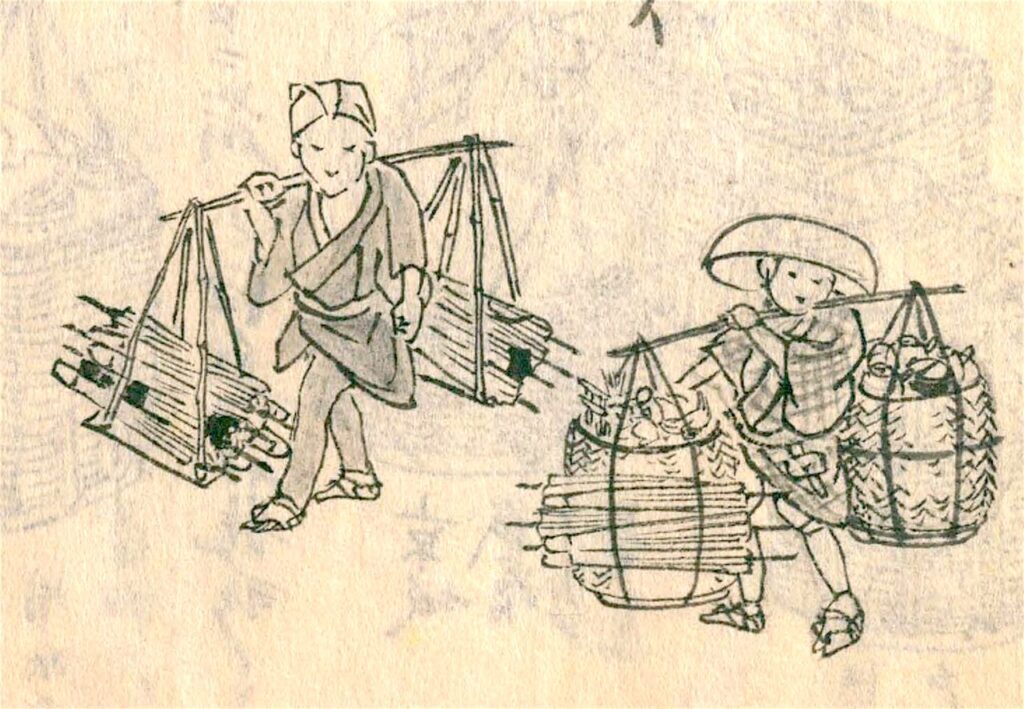
Ash Buyers — Turning Byproducts into Resources
Each household hearth produced a large amount of ash. “Ash buyers” collected it, and it was used as fertilizer, for soil improvement, dyeing, and sake brewing. It was hard labor, with workers covered in ash, but this system shows how waste was incorporated into society as valuable resources.
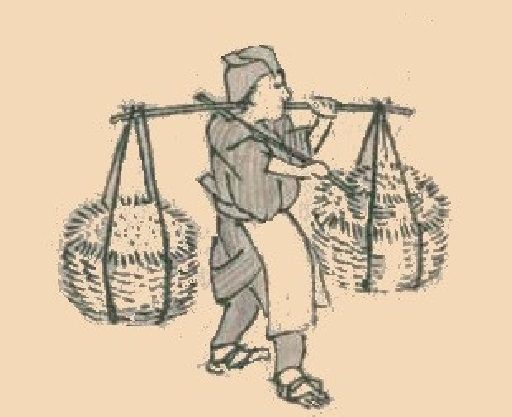
Candle Drippings and “Wax Tears”
Lighting in Edo relied on lanterns and lamps. Candles were luxury items, used by high-ranking samurai, merchants, and pleasure quarters. The wax dripping from holders was called rōrui — “wax tears” — and was collected for reuse. The beautiful name itself reflects the mottainai spirit. Morisada Mankō left no illustration of this trade, but the writer Santō Kyōden depicted it in his work Hyakkoi Kumitate Seisui-ki. It was a humble job supporting Edo’s “light.”
A Thorough Mottainai Philosophy
Clothes became rags or diapers, paper was reused on the back or recycled, oil was burned in lamps, ash returned to the fields. Truly nothing was thrown away. Edo society functioned as one of the world’s most advanced circular systems.
Reuse Culture Continuing Today
This spirit still lives in modern Japan. Many Japanese have little resistance to used goods, and recycling shops are firmly part of daily life.
- Postal items: Unused stamps and postcards can be exchanged at post offices. Valuable stamps can be appraised at Tokyo Central Post Office or specialty shops.
- Appliances: To reduce initial costs of living in Japan, used appliances are available at HardOff and local recycling shops.
- Clothing: Everyday secondhand wear at Second Street or Treasure Factory; vintage items in Daikanyama or Shimokitazawa.
- Brand goods: Pre-owned luxury goods at Komehyo, with authentication guaranteed.
- Books: Common secondhand books at BookOff.
- Antiquarian books: Treasures for researchers and collectors in Jimbocho book town.
For travelers, these are perfect spots to buy cheaply, enjoy old items, and experience Japan’s reuse culture firsthand.
From Edo to the Future
People in Edo wasted nothing — from scraps of fabric to a single drop of wax. That spirit has been inherited in today’s recycling businesses and reuse culture. In an age when vinyl umbrellas and appliances are easily thrown away, perhaps it is time to learn again from Edo’s mottainai.
You might also be interested in these articles
■Japan Has Been Recycling Paper for 1300 Years — The Essence of “Mottainai” Culture

Editor and writer from Japan. Not the best at English, but I share real stories with heart and honesty — aiming to connect cultures and ideas that matter.
